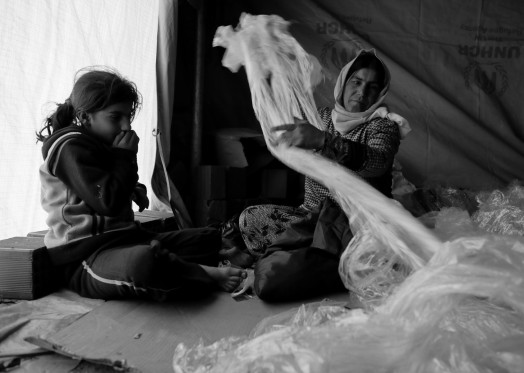On the verge of the Caliphate #2

Another car bomb (six dead and scores wounded), this time at the entrance of the governor’s office in Erbil, the usually rather safe capital of the Kurdish autonomous region. It’s a disturbing event: it shows that the 1,000 km common frontier with the Caliphate is hard to defend and that the Is is not short of fanatics willing to attack civilian and military targets. The Caliphate forces seem to be overstreched, having to fight on multiple fronts in Syria and Iraq, and so it becomes even more dangerous. While it is tightening its grip on the territory sized last summer, it’s no more on the offensive. The Iraqi army – if unable to launch a sustained and effective campaign – has nevertheless re-entered the city and the the country’s biggest oil refinery at Baiji. Shia fearsome militias – not famous for respecting human rights – are slowly advancing east of Baghdad; and the Kurdish peshmergas, humiliated last August, are gaining ground in the north and are finally getting a little help from their friends (US bombs, EU and Cia advisors, Iranian “technicians”). So now the Caliphate strikes randomly, and the pious jihadis resort to their good old days’ favorite blend of suicide attacks and mediatic terrorism, whose last horrific performance was the behaeding of Peter Kassig and a dozen of Syrian captured soldiers.
But the Caliphate, althought apparently on the defensive, is by no means retreating. It has a vast weapons’ arsenal, skilled military personnel, lots of cash and a broad – if not sincere – support among the sunni youngs on both sides of the Euphrate. Foreign recruits are still flocking to Raqqah from all over the world. And oil smuggling makes for a constant supply of hard currency.
The oil, sold half price by the Caliphate to obliging middlemen, flows to Turkey, Iran and even to Damascus along the usual routes and through less controlled crossing points. I saw thousands of tankers rolling slowly down the roads to Qasr-e-Shirin, in Iran, and to Turkey via the Ibrahim Khalil post north of Zakho.
Moving on from Erbil I checked the northern boundaries of the Caliphate. I had to carefully work my way west of the Kurdish capital to the Mosul dam, recently liberated by the peshmergas, and venture into the Niniveh plain. It’s a buffer zone, dotted by lookouts and check points, and by car you have to make long detours to avoid getting in sight of the Caliphate’s snipers and tanks.
In Alqosh, a christian village periously hanging on the frontline, I met father Gabriel Tooma, superior of the Virgin Mary monastery. “Almost everyone left” he tells me. “And nobody wants to come back. It’s enough. We’ve been persecuted for centuries: coexistence with islam is now out of question for us”. But the suffering of the Yazidis of Mount Sinjar, a centuries-old religious minority, is even worse. Viewed by the jihadis as polytheists and pagans, they’ve been executed by the thousands and chased out of their villages, whilst their women have been enslaved and given to the fighters. More than 7,000 of them are squatting five crumbling unfinished building in Zakho where they barely survive in appalling conditions.
I left Zakho with a heavy heart. And crossed the Tigris on my course along the Syrian-Turkish border. Around Akcakale, on the main road to the Caliphate’s self proclaimed “capital” of Raqqah, just an hour’s drive away, there are three tented camps with at least 250,000 refugees, mostly from Alep and Idlib. Then, following the barbed wire and a narrow military service lane between sheep grazings and cotton fields, I reach Kobane….well, the hill in front of it, where the Turkish tanks stand by. An F-16 flies in the blue sky and drops a missile: a blast, a cloud of smoke, a cluster of gun shots. Soon after a bigger spy plane circles high above, assessing the kill. It goes on and on like this since September. The only English speaking is 14 years old Wael. The grown-ups observe with binoculars. Wael points in the direction of the opposite hill: day after day he sees the destruction of his home.





